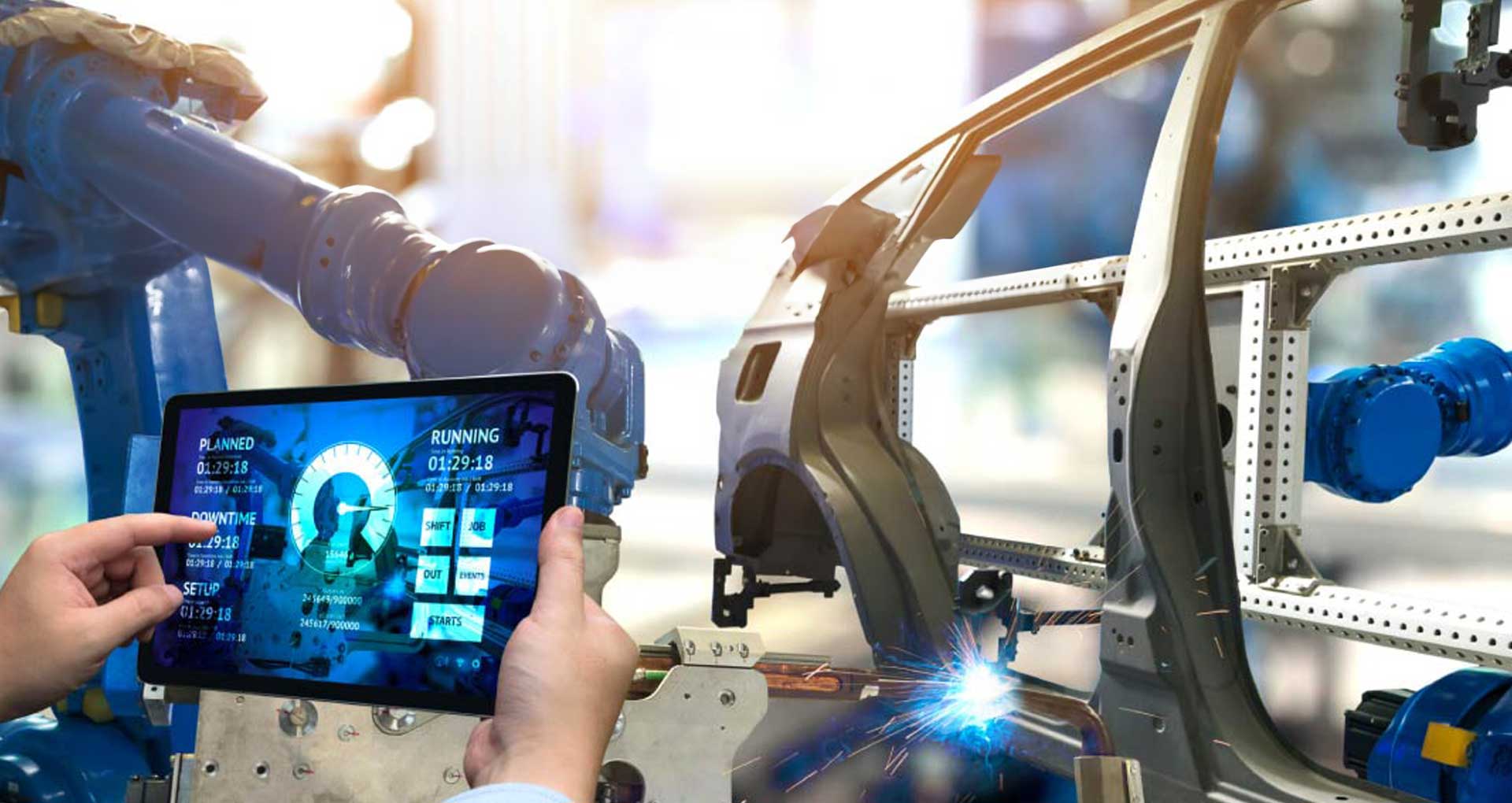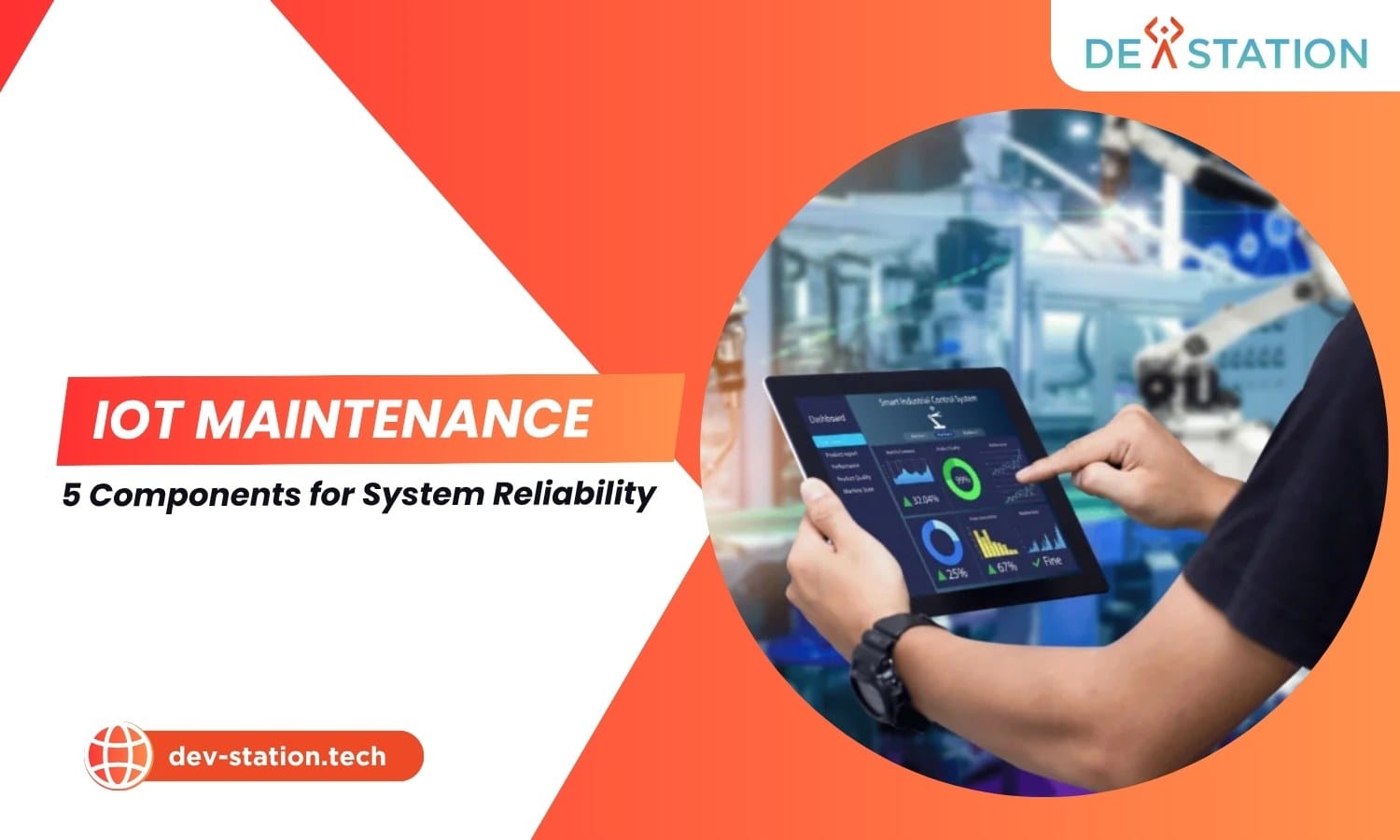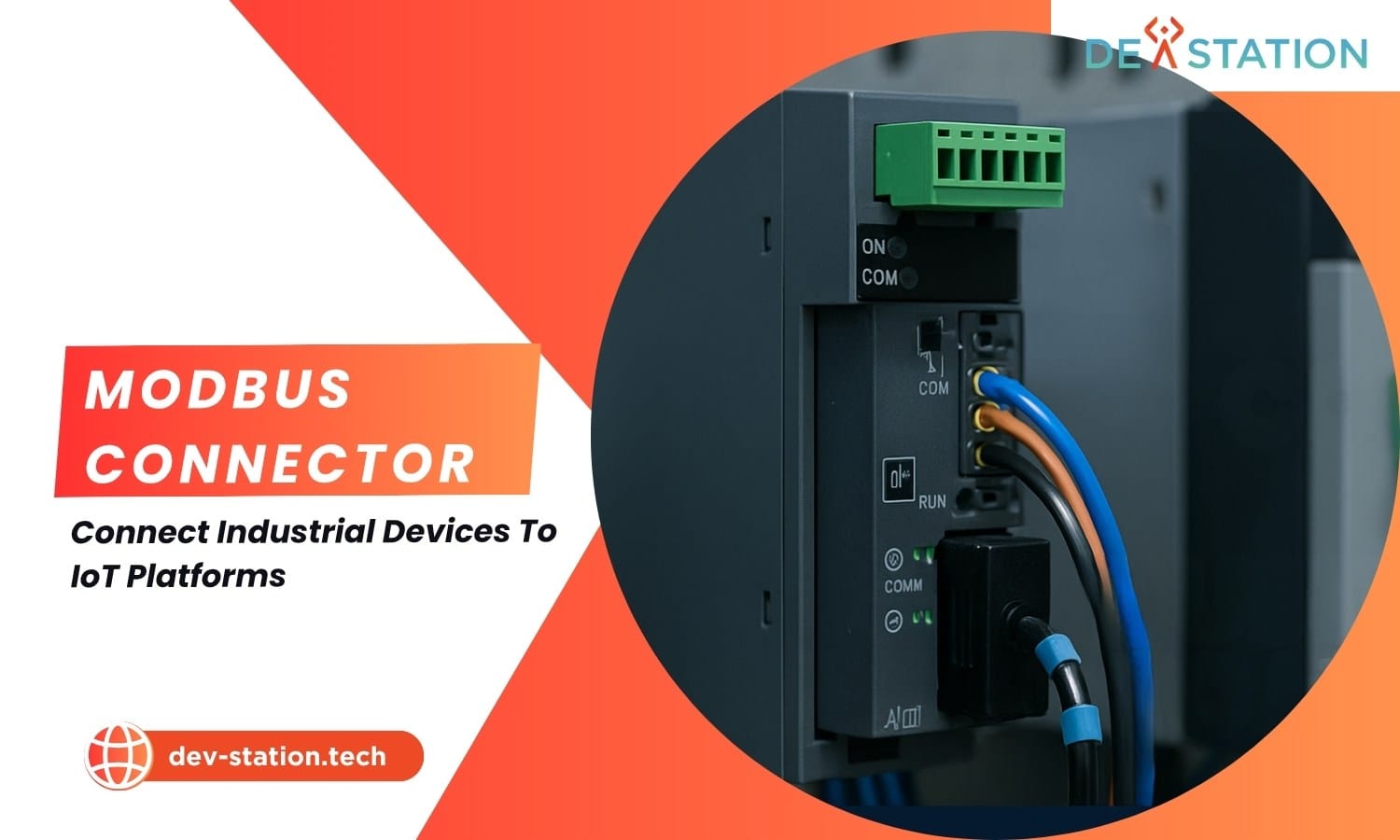IoT maintenance and support plans are essential for ensuring the long-term reliability and performance of your deployed smart system servicing. At Dev Station Technology, we provide a comprehensive framework to safeguard your investment and guarantee operational continuity for your entire connected device upkeep strategy, ensuring device lifecycle management and optimal system health.
Contents
ToggleWhat Are The 5 Key Components of a Successful IoT Maintenance and Support Plan?
A successful IoT maintenance and support plan is built on five core pillars: proactive device monitoring and alerting, robust security and firmware management, efficient field service logistics, comprehensive data management and analytics, and a clear Service Level Agreement (SLA) with a defined support structure.
Deploying an Internet of Things solution is just the beginning of a long-term journey. Without a strategic post-deployment plan, businesses risk facing catastrophic failures. Studies from Cisco have indicated that as many as 74% of IoT projects fail to be considered a complete success, often due to post-deployment challenges like long completion times, lack of internal expertise, and budget overruns. The true value of an IoT investment is only realized through its sustained, reliable operation. A well-structured IoT maintenance-support strategy is not merely an operational expense; it is a crucial investment in ensuring uptime, security, and the long-term ROI of the entire system. Let’s explore the five essential components that form the foundation of a resilient and successful IoT ecosystem.

What Is Proactive Device Monitoring and Alerting?
Proactive device monitoring involves continuously collecting and analyzing health and performance data from every device in your network to detect potential issues before they cause failures. An alerting system then automatically notifies the appropriate teams to enable swift, preventive action.
The foundation of any robust IoT maintenance plan is the ability to see what’s happening across your entire device fleet in real time. This moves your organization from a reactive stance (fixing things after they break) to a proactive one. The financial implications are significant; reports have shown that unplanned downtime can cost some manufacturing companies as much as $260,000 per hour. Furthermore, a global survey revealed that for businesses in the ASEAN region, the median cost of an outage is $2.5 million per hour. A comprehensive iot device management platform is critical for this. These platforms provide a centralized dashboard to track key metrics for device health, such as:
- Connectivity Status: Is the device online or offline?
- Battery Level: Is the device’s power source stable?
- Signal Strength: Is the communication link reliable?
- Data Transmission Frequency: Is the device reporting data as expected?
- Resource Utilization: How much CPU and memory is the device using?
An effective alerting system uses predefined thresholds to trigger notifications. For example, if a device’s battery drops below 20% or if it hasn’t sent a data packet in over an hour, an automated alert can be sent via email, SMS, or to a service management platform. This proactive approach to connected device upkeep enables teams to address issues like a failing battery or poor network connection before they result in a critical device failure and costly downtime. This constant vigilance is a cornerstone of intelligent system servicing.
What Does a Robust Security and Firmware Management Strategy Involve?
A robust strategy involves a systematic process for deploying security patches and feature enhancements to devices in the field via Over-the-Air (OTA) updates. This process must be secure, with firmware validation, encrypted delivery, and fail-safe mechanisms to prevent device failure during updates.
IoT devices are often prime targets for cyberattacks. A 2024 Verizon report found that one in three data breaches now involves an IoT device. Furthermore, Microsoft’s Digital Defence Report 2023 noted that 57% of devices on legacy firmware are vulnerable to a high number of exploits. Outdated firmware is a major liability. A comprehensive plan for over-the-air (ota) firmware updates is non-negotiable for device lifecycle management. Key aspects of this component include:
| Strategy Element | Description | Primary Benefit |
|---|---|---|
| Secure Delivery | Firmware updates must be encrypted in transit to prevent interception and tampering. | Prevents hijacking of the update process. |
| Firmware Validation | Devices must cryptographically verify the signature of the firmware before installation to ensure its authenticity. | Protects against installation of malicious code. |
| Rollback Mechanisms | If an update fails, the device should automatically revert to its previous stable firmware version to avoid bricking. | Ensures device uptime and recoverability. |
| Grouped Deployments | Updates should be rolled out to small, controlled groups of devices first to identify any issues before a full fleet-wide deployment. | Minimizes the impact of a faulty update. |
Regularly scheduled security patching is a critical part of this process. The OWASP list of top 10 IoT vulnerabilities includes the lack of a secure update mechanism as a primary reason devices are compromised. A systematic approach to firmware management not only enhances security but also allows for the deployment of new features, improving the functionality and extending the usable life of your IoT hardware.
How Do You Implement Efficient Field Service and Logistics?
Efficient field service is implemented by integrating IoT monitoring data with a service management system. This integration automates the creation of service tickets, dispatches technicians with the right skills and parts, and provides them with the diagnostic data needed for a rapid, first-visit resolution.
Even with the best remote tools, some issues will require physical intervention. An efficient field service plan is crucial for managing hardware replacements, complex repairs, or on-site diagnostics. The key to efficiency is leveraging data from your remote monitoring system to inform and streamline your logistics. When an IoT alert indicates a potential hardware failure, it should automatically:
- Create a Service Ticket: Automatically generate a ticket in your helpdesk system with all the relevant device information, location, and diagnostic data.
- Identify Required Parts: Based on the error code, the system can determine the likely replacement parts needed for the repair.
- Dispatch a Technician: The system can identify the nearest qualified technician and schedule the service visit, ensuring they have the correct parts and information.
- Provide Remote Guidance: The technician can access the device’s history and performance data on-site, enabling faster troubleshooting and resolution.
This data-driven approach transforms field service from a costly, reactive process into a highly efficient, proactive operation. It minimizes the time to resolution, reduces the number of truck rolls, and increases the first-time fix rate, all of which contribute directly to a lower total cost of ownership and improved IoT reliability.
Why Is a Comprehensive Data Management and Analytics Plan Crucial?
A data plan is crucial because the historical performance data from your IoT fleet is an invaluable asset. Analyzing this data enables predictive maintenance, identifies systemic issues across device models, and provides insights for improving future hardware and software generations.
The data generated by your IoT devices is not just for real-time monitoring; its true long-term value lies in analytics. A plan for managing and analyzing this data is essential for evolving your IoT maintenance from proactive to predictive. The most powerful application of this is predictive maintenance. By applying machine learning algorithms to historical sensor data, organizations can predict equipment failures before they happen. According to McKinsey, this approach can reduce maintenance costs by up to 40% and cut downtime by as much as 50%.
For instance, by analyzing vibration and temperature data from thousands of industrial motors, an algorithm can learn the subtle patterns that precede a bearing failure. It can then raise an alert to service a specific motor days or weeks in advance, allowing the maintenance to be scheduled during a planned shutdown. Beyond predictive analytics, a strong data management plan helps you:
- Identify Root Causes: Analyze trends to determine if failures are isolated incidents or systemic problems with a specific hardware component or firmware version.
- Optimize Performance: Understand how environmental factors or usage patterns affect device performance and lifespan.
- Inform Future Designs: Use real-world failure data to inform the design of your next-generation hardware, making it more robust and reliable.
What Should Be Included in a Clear Service Level Agreement (SLA) and Support Structure?
A clear SLA should define specific, measurable commitments for uptime, issue response time, and resolution time. The support structure should outline communication channels, escalation paths, and the roles and responsibilities of both the internal team and any external maintenance provider.
The final component ties everything together by defining expectations and responsibilities. A service level agreement (sla) is a contract that codifies the promises of your maintenance provider, whether it’s an internal team or a third-party MSP. This document should be unambiguous and contain metrics such as:
- Guaranteed Uptime: A commitment to a certain percentage of device uptime, such as 99.9%.
- Response Times: The maximum time it will take for the support team to acknowledge an alert or ticket (e.g., 15 minutes for critical issues).
- Resolution Times: The maximum time it will take to resolve an issue, often tiered by severity.
Alongside the SLA, a well-defined support structure is essential. This includes clear channels for technical support, an escalation matrix for unresolved issues, and a regular reporting schedule to review performance against the SLA. For many organizations, partnering with a provider of managed services is the most effective way to ensure these structures are professionally managed, allowing the business to focus on its core operations while entrusting the complexities of IoT uptime to specialists.
Why Is Post-Deployment Management Essential for IoT ROI?
Post-deployment management is essential because the return on investment (ROI) from an IoT project is generated over the long term through continuous, reliable operation. Without it, high failure rates and operational downtime quickly erode any potential financial gains and can turn a promising investment into a significant loss.
The successful launch of an IoT project is a major milestone, but it is not the finish line. The true business value—whether from increased operational efficiency, new revenue streams, or enhanced customer experiences—accrues over the lifetime of the system. Neglecting post-deployment management is one of the primary reasons that a high percentage of IoT initiatives fail to deliver their expected ROI.
The costs associated with unmanaged deployments are multifaceted. A single hour of downtime can have staggering financial consequences, impacting productivity and customer trust. A proactive IoT maintenance plan directly protects your ROI by maximizing system uptime and operational availability. By investing in a structured approach to support, you ensure the data continues to flow, the insights continue to be generated, and the business value continues to grow for years to come.
How Can You Ensure Long-Term System Reliability and Performance?
You can ensure long-term reliability and performance by adopting a holistic maintenance strategy that combines proactive monitoring, regular security updates, data-driven predictive analytics, and a clearly defined support structure. This creates a cycle of continuous improvement that enhances system resilience over time.
Ensuring your IoT system remains reliable for the long haul requires a commitment to the principles outlined in the five key components. Reliability is not a one-time setup; it is the result of continuous, diligent effort. It involves a cultural shift from simply fixing problems to actively preventing them. By collecting and analyzing performance data over months and years, your organization can move beyond simple alerts and begin to understand the deeper patterns of its IoT deployment.
This long-term view allows you to identify which device models are most reliable, which environments are harshest on your hardware, and how usage patterns impact device lifespan. These insights are goldmines for improving operational efficiency and making smarter procurement decisions in the future. Ultimately, a successful IoT system is one that you can depend on day in and day out. That level of trust is only built through a sustained commitment to a comprehensive maintenance and support plan.
What Should You Look for in an IoT Maintenance Provider?
When choosing a provider, look for deep expertise across all five key components: a proven monitoring platform, a secure OTA update process, field service capabilities, strong data analytics skills, and a flexible, transparent SLA. They should act as a strategic partner, not just a service vendor.
For many businesses, the most effective path to a successful IoT maintenance strategy is to partner with a specialized Managed Service Provider (MSP). The IoT Managed Services market is projected to grow to USD 640.34 billion by 2032, driven by the increasing complexity of IoT ecosystems and the need for external expertise. When evaluating potential providers, it is crucial to look beyond basic support. A true partner will offer comprehensive services covering the full spectrum of IoT maintenance. They should possess a deep understanding of hardware, software, connectivity, and security. Ask potential providers about their experience with deployments of a similar scale and complexity to your own. A top-tier provider will work with you to develop a customized plan that aligns with your business objectives and ensures the long-term health and performance of your critical IoT systems.
At Dev Station Technology, we specialize in providing end-to-end IoT solutions, from initial development to long-term maintenance and support. We understand that a successful deployment is only the first step.
To learn more about how a strategic maintenance plan can secure the future of your IoT investment, we encourage you to explore the insights and solutions available at Dev Station Technology. Contact our team of experts at sale@dev-station.tech to discuss your specific needs and discover how we can build a resilient support structure for your connected products.





